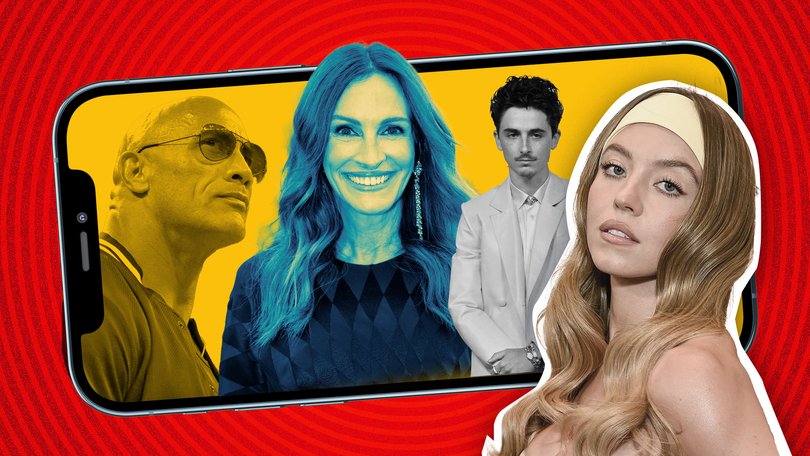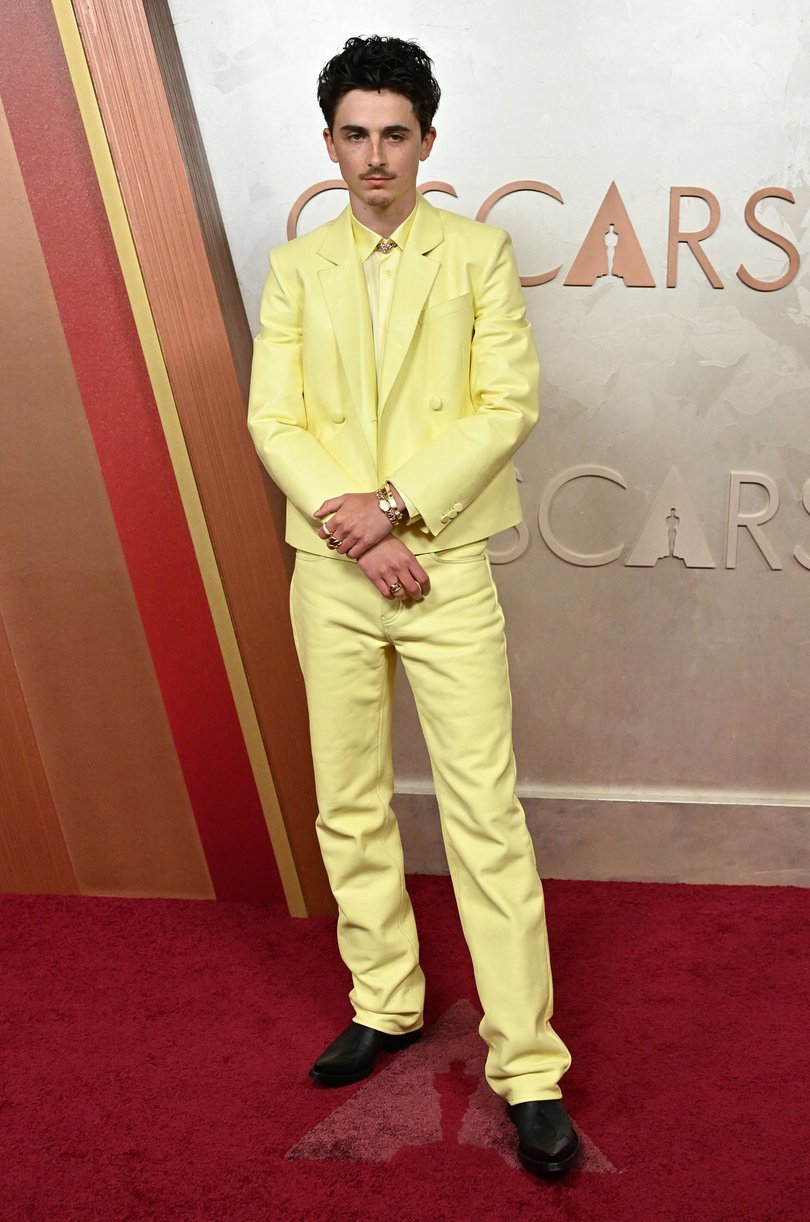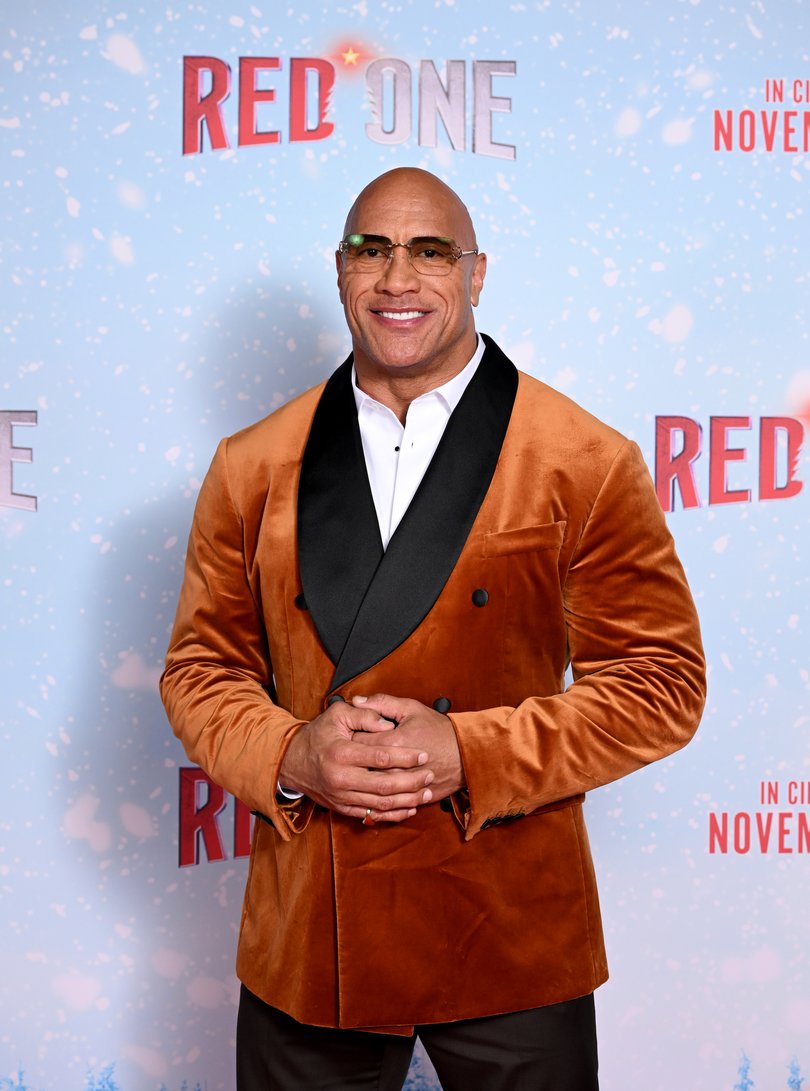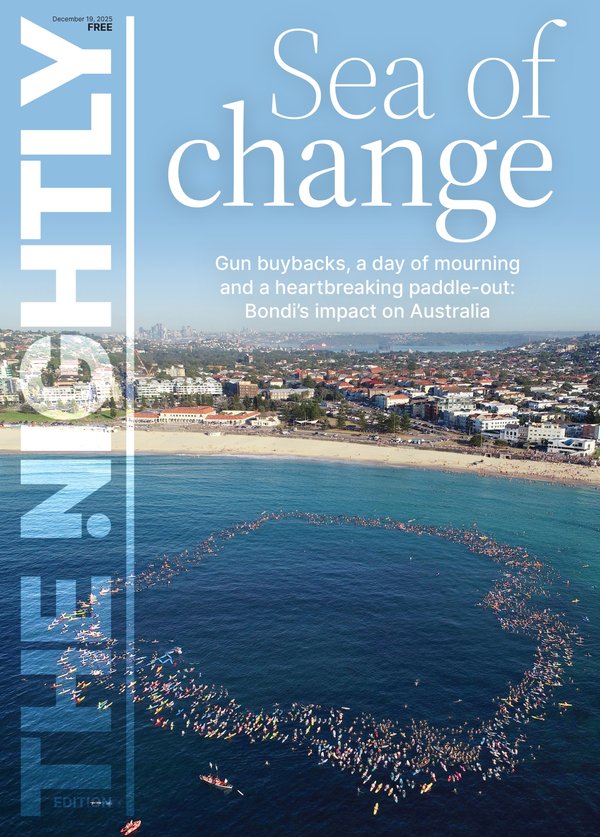A Sydney Sweeney study: How social media has killed the bankable Hollywood star and left film studios reeling

Two days after her latest film, Christy, bombed at the box office, Sydney Sweeney wrote on her Instagram: “We don’t always just make art for numbers, we make it for impact, and Christy has been the most impactful project of my life.”
Dwayne Johnson too confronted the dismal takings of The Smashing Machine, when he posted: “In our storytelling world, you can’t control box office results — but what I realised you can control is your performances, and your commitment to completely disappear and go elsewhere.”
Art, not commerce, they say. But as much you want to admire the sentiment, Hollywood is a business and if you’re a proper movie star, rather than just an actor, your main job is to bring in the money.
Sign up to The Nightly's newsletters.
Get the first look at the digital newspaper, curated daily stories and breaking headlines delivered to your inbox.
By continuing you agree to our Terms and Privacy Policy.The movie industry has been going through a mini existential crisis for the past six years since the disruption of Covid shutdowns and the twin strikes of 2023. Box office receipts have never recovered to pre-pandemic levels.
First, streaming was eating its lunch, with audiences staying home on the couch instead of going to a cinema. Now, tech is challenging everyone, including streaming, on all fronts.
But before that, the 21st century has seen the slow death of the movie star — someone whose celebrity profile is enough to attract audiences and open a film, regardless of the project.
The year 2000 was the last time the top 10 highest grossing movies of the year were predominantly original films — seven of them.
In 2001, the first Harry Potter and Lord of the Rings movies reigned supreme, while only three titles (Monster’s Inc, Shrek and Pearl Harbour) weren’t a remake, sequel or part of a franchise.
This year there are none, because F1: The Movie isn’t an original story, it’s a brand extension of an international motorsports competition.
For the past 25 years the star is not a person, it’s the brand. Intellectual property is far more valuable than one actor’s face on a poster.

In 2022 Quentin Tarantino said on the 2 Bears 1 Cave podcast: “Part of the Marvel-isation of Hollywood is, you have all these actors who have become famous playing these characters. But they’re not movie stars. Right?
“Captain America is the star. Or Thor is the star.”
That’s been more apparent than ever in these past two months as one movie after another, starring a big, buzzy or legacy celebrity, fall over or underperform at the box office.
Christy has yet to clear $US2 million ($AU3m) despite opening on thousands of screens in the US, although its budget of $US15m is relatively low. The Smashing Machine is sitting on about $US20m but it cost at least $US50m.
After the Hunt, with Julia Roberts, Ayo Edebiri and Andrew Garfield, took in under $US10m from a reported production budget of $US70m. A Big, Bold Beautiful Journey, starring Margot Robbie and Colin Farrell, made $US22m against a reported $US45m budget.
Jennifer Lawrence and Robert Pattinson’s Die My Love has grossed $US7.4m for a movie Mubi paid $US24m to buy.
One Battle After Another, with Leonardo DiCaprio, made a respectable $US202m, but with a production budget of at least $US130m, it’s not yet profitable, although it brings value to the studio in other ways such as prestige.
There are a few things going on here but it’s notable that all those films are originals, and the mainstream audience has been trained out of showing up for “non-eventised” films, ie. anything that’s not a franchise blockbuster.
Right now, two movies are firing at the box office — Wicked: For Good and Zootopia 2. Both franchises whose brands are bigger than their stars. It doesn’t matter that it’s Ariana Grande and Cynthia Erivo, it matters that it’s Wicked.

It’s looking grim for the cult of the movie star, and it’s not because they’re not trying. Someone like Glen Powell is always really game.
The celebrities have been all over place, online and offline. Sweeney has had a controversial year with that American Eagle jeans/genes ad campaign and being papped everywhere with internet villain Scooter Braun, but she is not shy with publicity.
In the lead-up to Christy, she turned up in the risqué, headline-grabbing dress on a red carpet, she went viral for shutting down a GQ question she didn’t like, she did all the things, and she was being served up by the algorithm.
Johnson too put on that smile and answered questions in interviews, even opening up the “other side” of himself in long profiles. Roberts, Edebiri and Garfield hit the promo trail hard, fronting up everywhere they could.
DiCaprio, notoriously not one for the publicity machine, obliged and a raft of videos went viral. Bruce Springsteen partnered up with his onscreen version, Jeremy Allen White, to sing his praises for the biopic Deliver Me From Nowhere, but it wasn’t enough to get people to actually buy movie tickets.
When it comes to promoting movies, there are more avenues than ever, including directly to fans through their own social media channels. You can sit down for a Chicken Shop Date, or literally sweat through Hot Ones. You can cuddle up to a Sesame Street favourite or Buzzfeed puppies.
You can sample another country’s snacks, be hooked up to a lie detector, play “how well do you know me” or just generally chum it up with your co-stars.
In terms of “earned” value, the media blitzes are seemingly successful in terms of reach and virality.
Puck’s Matt Belloni raised an interesting point recently about why the millions of Instagram, YouTube and TikTok views aren’t converting to box office. “The truth is that the consumer now tends to just skip over the product and enjoy the promotion if the product is so niche that the media noise isn’t justified,” he wrote.
“If we can all watch Channing Tatum being fun and cool on Hot Ones, the product he’s actually selling — Roofman — has to feel bigger and more interesting than that. And if it doesn’t, should he just not do Hot Ones? Should the studio not let him?”
Perhaps Belloni is correct, and the social media video is enough to satiate the appetite of audiences whose attention spans don’t stretch to a two-hour movie anymore. If that 20 minutes of Tatum was all the Tatum you needed, what’s the incentive to go out and pay to see Roofman?
Recently, there was a 22-minute Vogue video of Josh O’Connor and Paul Mescal being interviewed together for their period drama, History of Sound. It was inescapable, whether the whole thing or just clips from it, because they were being absolutely adorable together.
But History of Sound made less than $US1m in its US release (it comes out in Australia in December). It’s a small indie piece that was never going to do big money, but you still would’ve hope it would do better than that.
If your social feed is already endlessly looping Mescal and O’Connor being cute, are you not filled? If you love Benedict Cumberbatch and you just spent an hour listening to him on the Smartless podcast, do you still need to go see The Thing with Feathers?

The big question that remains this year is if Timothee Chalamet will be able to turn his social media popularity and ability to promote his films a little bit differently with off-kilter stunts into actual financial returns for Marty Supreme, which is due out in December in the US and mid-January in Australia.
The films themselves may not see the benefit of the expensive marketing campaigns the studios have paid for, but the celebrities certainly are. Their profiles are being lifted with every video interview or red carpet appearance that goes viral.
The Guardian journalist Marina Hyde had an interesting, perhaps half-joking, proposal on The Rest is Entertainment, her podcast with Richard Osman.
Hyde argued that the celebrities have more to gain from being in those films than the studios that hired them, so actors should be paying them, not the other way around, that they could bid to be in a movie.
Her reasoning was that actors could see it as an investment. If they shell out, say $3m, to be in a movie and then enjoy a two-month publicity campaign that boosts their name and face, they can then turn that buzz into a lucrative endorsement deal.
That initial outlay then is paid off in a $10m partnership with Omega or Nespresso or Dior or Calvin Klein.
That makes this generation of movie stars more like social media stars — go viral, get sponsored by a brand.

A month after Johnson first defended The Smashing Machine, he expanded on the drubbing. “Even though we didn’t do well (at the box office), or as well as we wanted to, it was OK because it just represented the thing I did for me,” he told the Hollywood Reporter’s Awards Chatter podcast.
He was referring to the significance of the film to him as an artist and as a person, giving him an outlet to pour into all his childhood traumas, and insisted that at no time, was he chasing the box office.
Maybe he wasn’t, which would be a first for a man obsessed with spreadsheets and corporate synergies, but the studio, A24, definitely didn’t drop $US50m so Johnson could have an extended therapy session.
A24 splashed the cash because they thought they were going to get a slice of Johnson’s collective box office takings, $US14 billion ($AU21.5b) in the past two decades. He is considered to be among the, if not the most, bankable star of the current era.
But even that honour isn’t worth what it used to be.
No doubt, the next two Johnson movies, live action Moana and Jumanji 3, will make good money, but is it because it’s Moana and Jumanji, or is it because it’s The Rock?

